Texas Frogfruit, or Phyla nodiflora, is a fantastic low-growing, semi-evergreen groundcover native to Texas and many parts of the US.
Some think Frogfruit might be a weed since it has the potential to invade lawns. However, this Texas native groundcover can be a stellar addition, providing an abundant blanket of flowers (and, as a result, butterflies) if given the right conditions.
I’ve loved seeing the proliferation of our Frogfruit plants as they have become absolute pollinator magnets.
Frogfruit Quick Facts
- Common Name(s): Turkey Tangle, Texas Frogfruit, Frogfruit
- Latin Name: Phyla nodiflora (FYE-lah noh-deh-FLOR-ah)
- Height: Three to six inches tall
- Soil Conditions: Moist soils and saline soils; Frogfruit handles clay, loam, caliche, and limestone well. A well-draining soil is best, but occasional poor drainage won't be an issue.
- Water: Frogfruit tolerates low water but will bloom best in more moist conditions. You can provide extra water during dry periods.
- Light: Partial shade to full sunlight
- Family: Verbenaceae (Verbena Family)
Distribution - Where Is Frogfruit Native?
Frogfruit is native to the southern and central United States. While it's well represented throughout much of Texas, it's most prolific from Central to East and Northeast Texas.
It grows along seashores, woods, and river bottoms (clearly, in moister conditions).

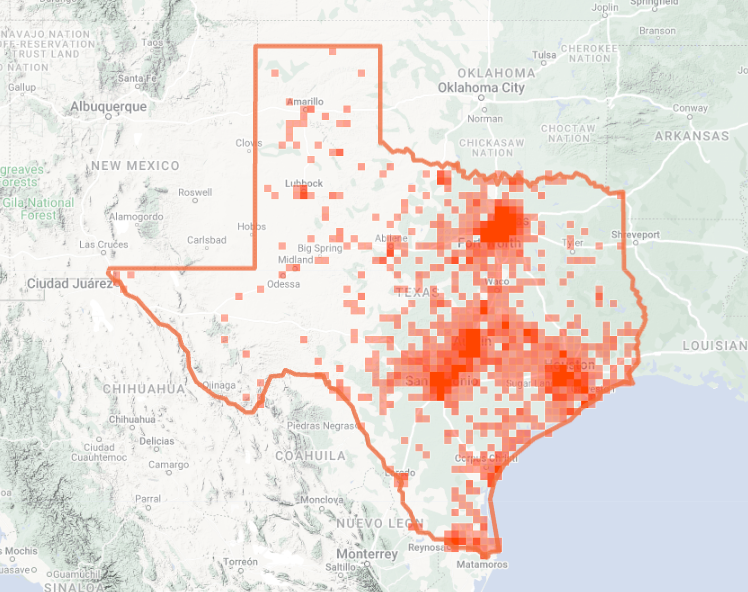
Source: iNaturalist
The Benefits of Frogfruit
Here are some reasons you might want to add this Texas native groundcover to your landscape.
For Your Landscape
- Pollinator Magnet: When your Frogfruit is in bloom, it will be buzzing with activity! You'll notice small moths, butterflies, bees, and wasps.
- Groundcover: Frogfruit can make good cover in a garden bed or area where you can't or won't grow grass. It doesn't mind some foot traffic, but be careful when mowing. Reportedly, Frogfruit that's mowed when in bloom can take up to two years to recover.
- Aesthetics: Frogfruit plants have mini verbena-like white flowers with a purple center. It gives your landscape a charming, homey feel, and a pop of activity.
- Deer Resistant: This is not a problem for me, but it's notable in case you want to plant something with assurance that it won't be nibbled away by a resident herd. 🦌
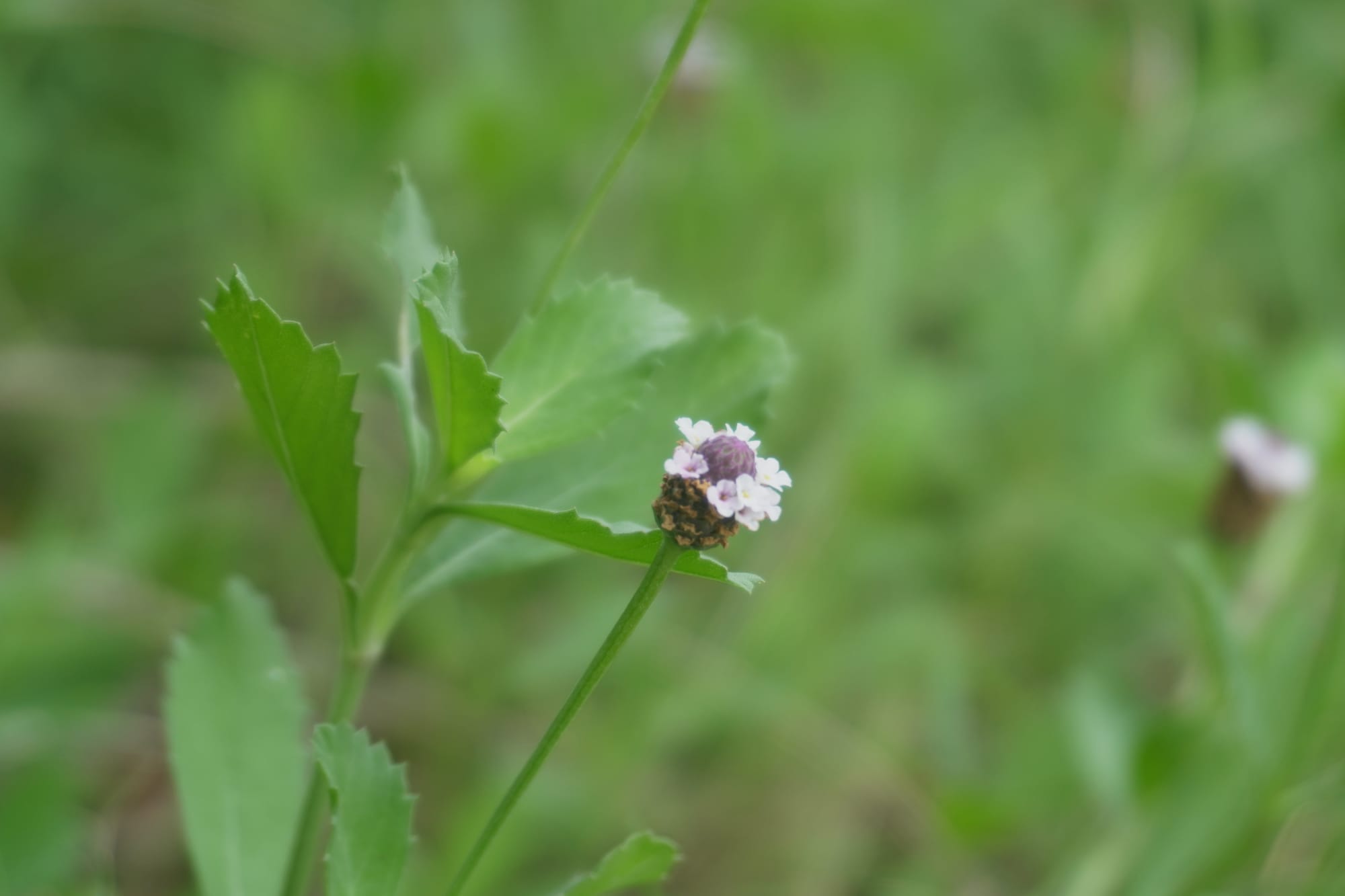
For Wildlife
Texas Frogfruit is about the pollinators!
- Larval Host Plant: Frogfruit is a favorite plant for many butterflies. Frogfruit is a host plant for the Phaon Crescentspot, Buckeye, and White Peacock butterflies (two out of three I've identified myself).
- Pollinators: Frogfruit is an excellent nectar plant for many pollinators, in addition to butterflies. Sit and watch your Frogfruit in bloom for a few minutes and you'll notice heaps of activity–different bees, wasps, moths, and butterflies, especially on sunny days.
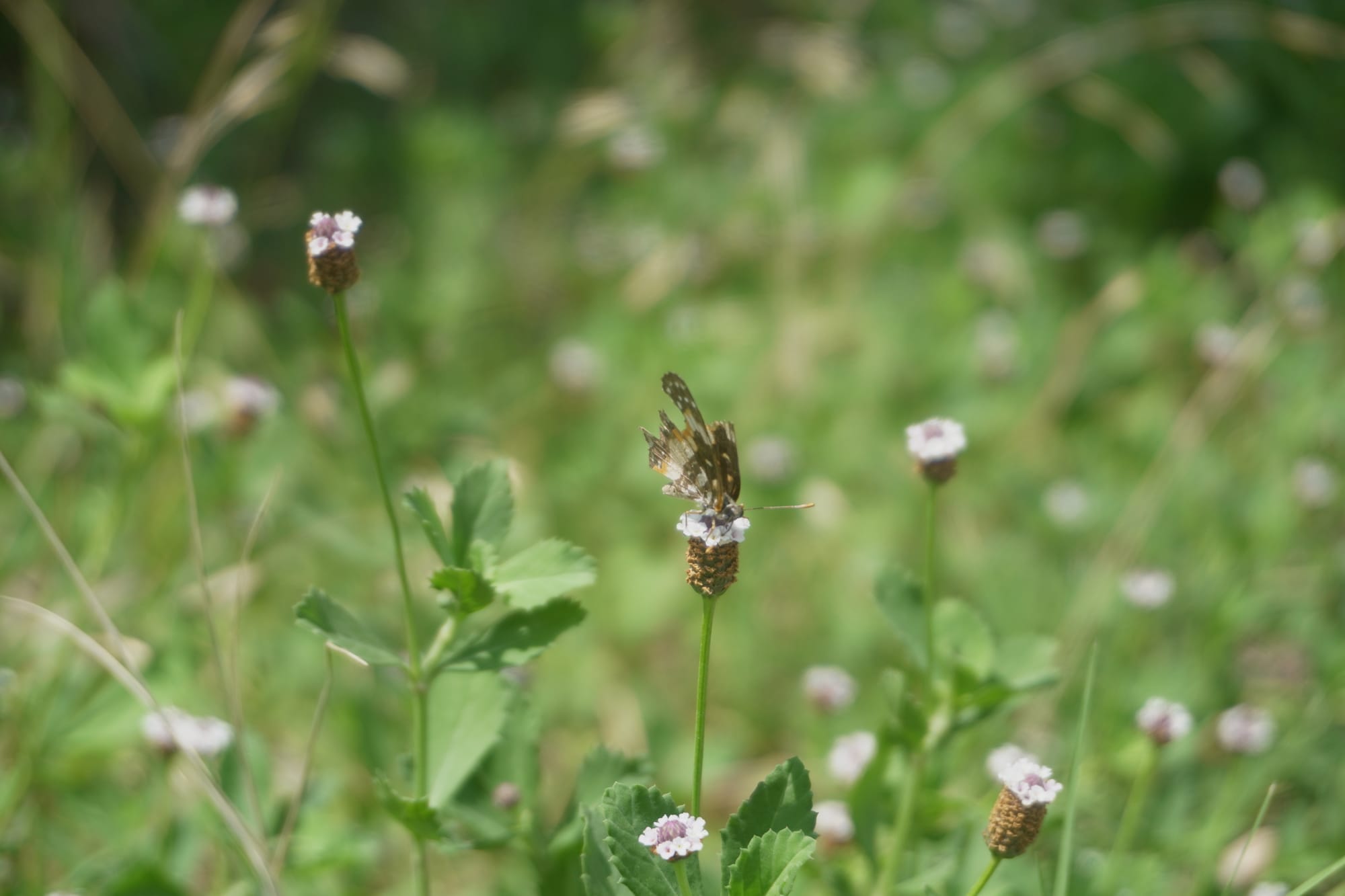
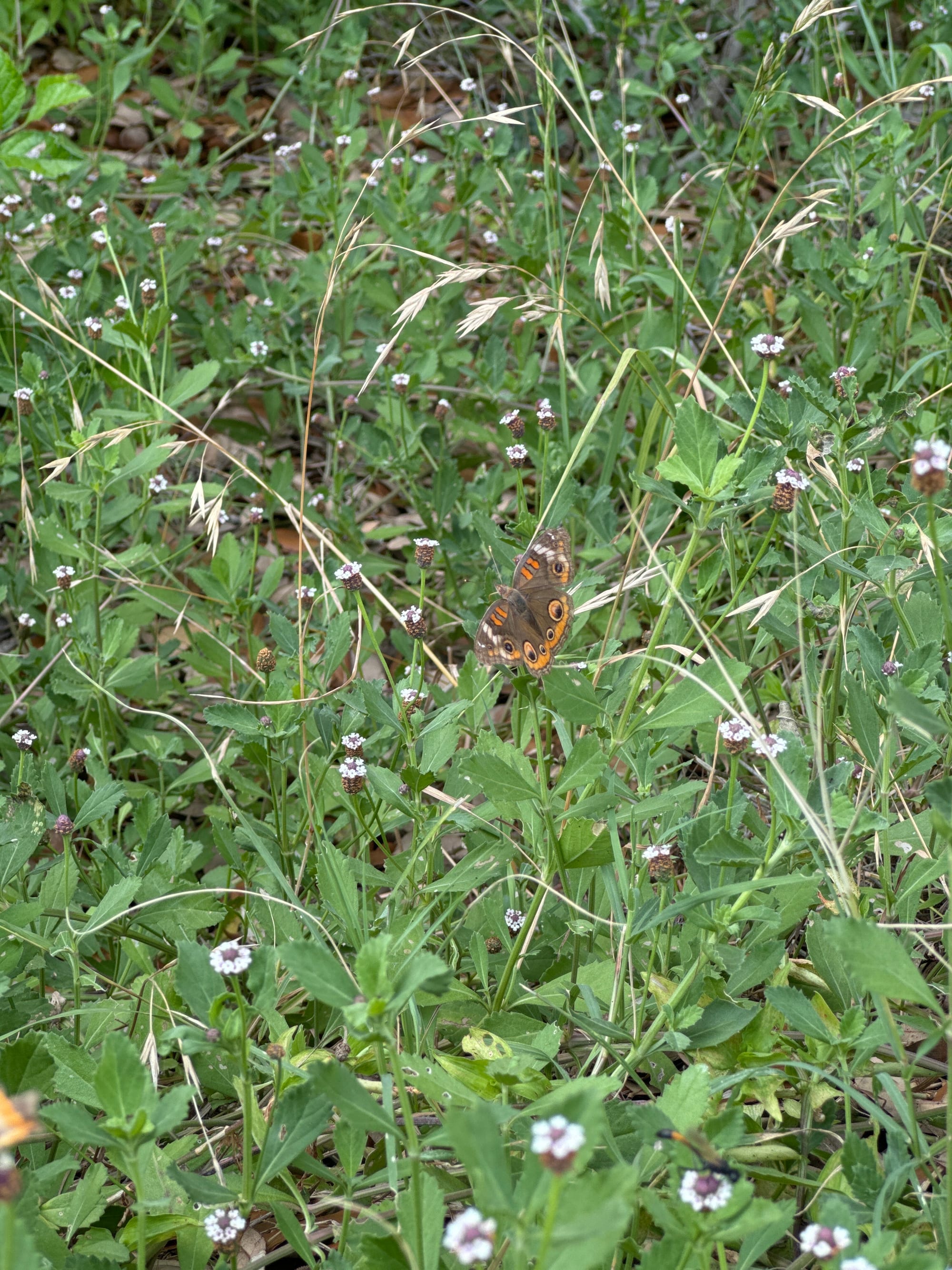
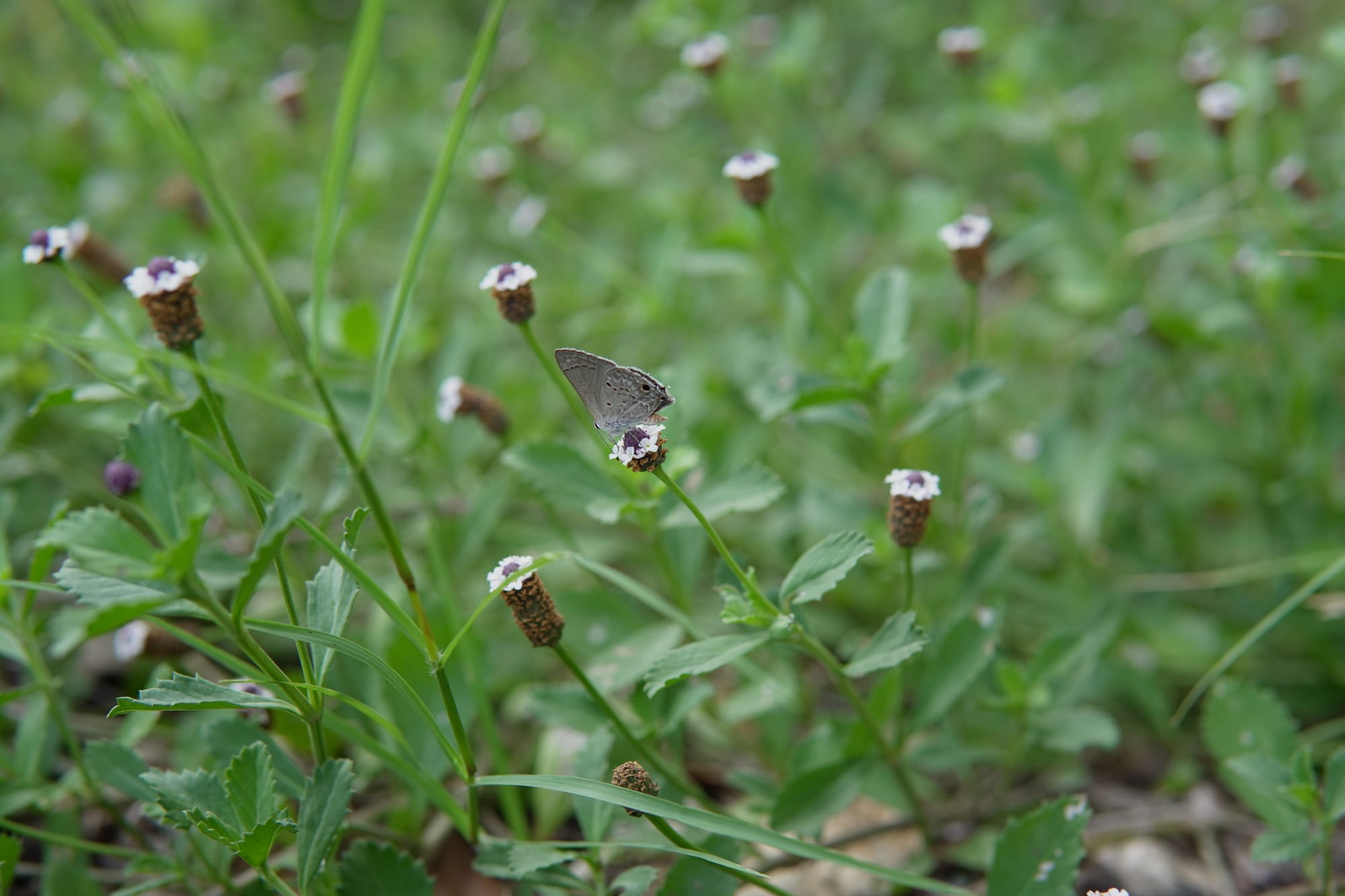
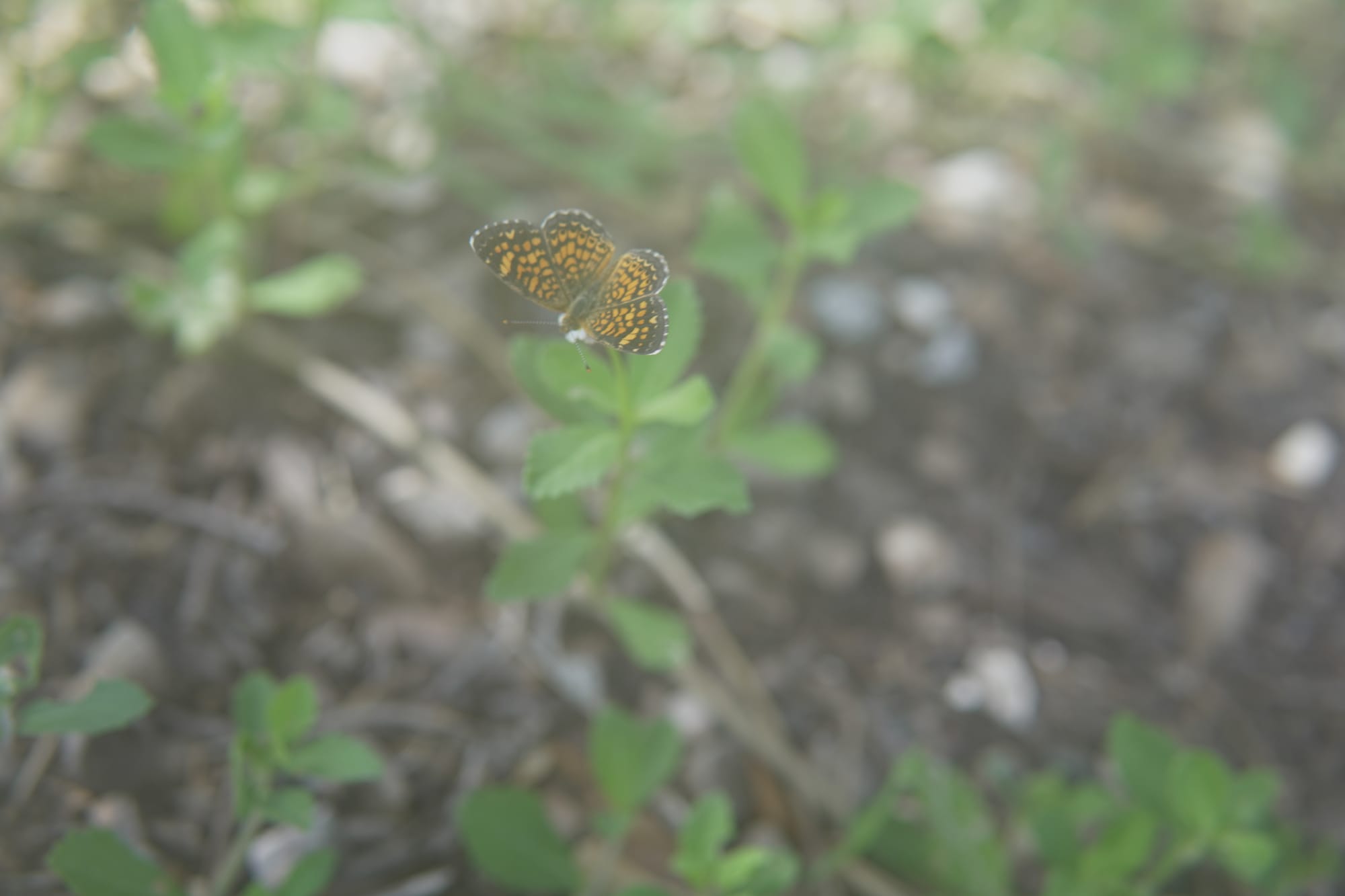
Planting and Care
Where Is the Best Place to Plant Frogfruit?
- Higher Moisture Points - As already mentioned, Frogfruit will be most prolific in slightly moister conditions. And, given its native distribution (Central to East Texas and the Tropics), you'll set yourself up for the greatest success by thinking about where more water flows on your property. I've planted my Frogfruit in the base of a rainwater harvesting basin at the lowest point, and it's absolutely thrived.
- Where You Want (& Don't Mind) Cover—If you need cover in a bed or have a bare area of our property that won't grow grass, it's worth considering Frogfruit. It can do quite well in partial shade as well as fun sun. However, if you're worried about spread, Frogfruit might be too aggressive for you.
- Along Pathways: Frogfruits are hardy plants that can withstand minor flooding, drought, and even foot traffic. For this reason, you can place them along pathways and or within the cracks between garden stones or a flagstone patio.
- In Pots: Frogfruits have attractive trailing foliage that can make them perfect for native potted plantings.
How Do You Care for Frogfruit?
Frogfruit can be very easy to care for. It might benefit from occasional water in drier seasons, although it shouldn't be necessary for its survival if you've planted in its native range.
Frogfruit will spread, so your biggest point of maintenance will be keeping it where you want it to be. You can mow Frogfruit, but be cautious to do so when it's in bloom–it doesn't take to that too well and apparently can take years to recover. It's also pretty easy to pull up, in my experience, so managing it isn't much of a pain.
What Are Companion Plants for Frogfruit?
Frogfruit can grow well in a pollinator garden (especially if you're looking to fill some space). I've seen recommendations to plant underneath Retama (a small tree that likewise doesn't mind more moisture).
I've planted my Frogfruit in a rainwater harvesting basin with Yaupon Holly, Flame Acanthus, and Copper Canyon Daisy.
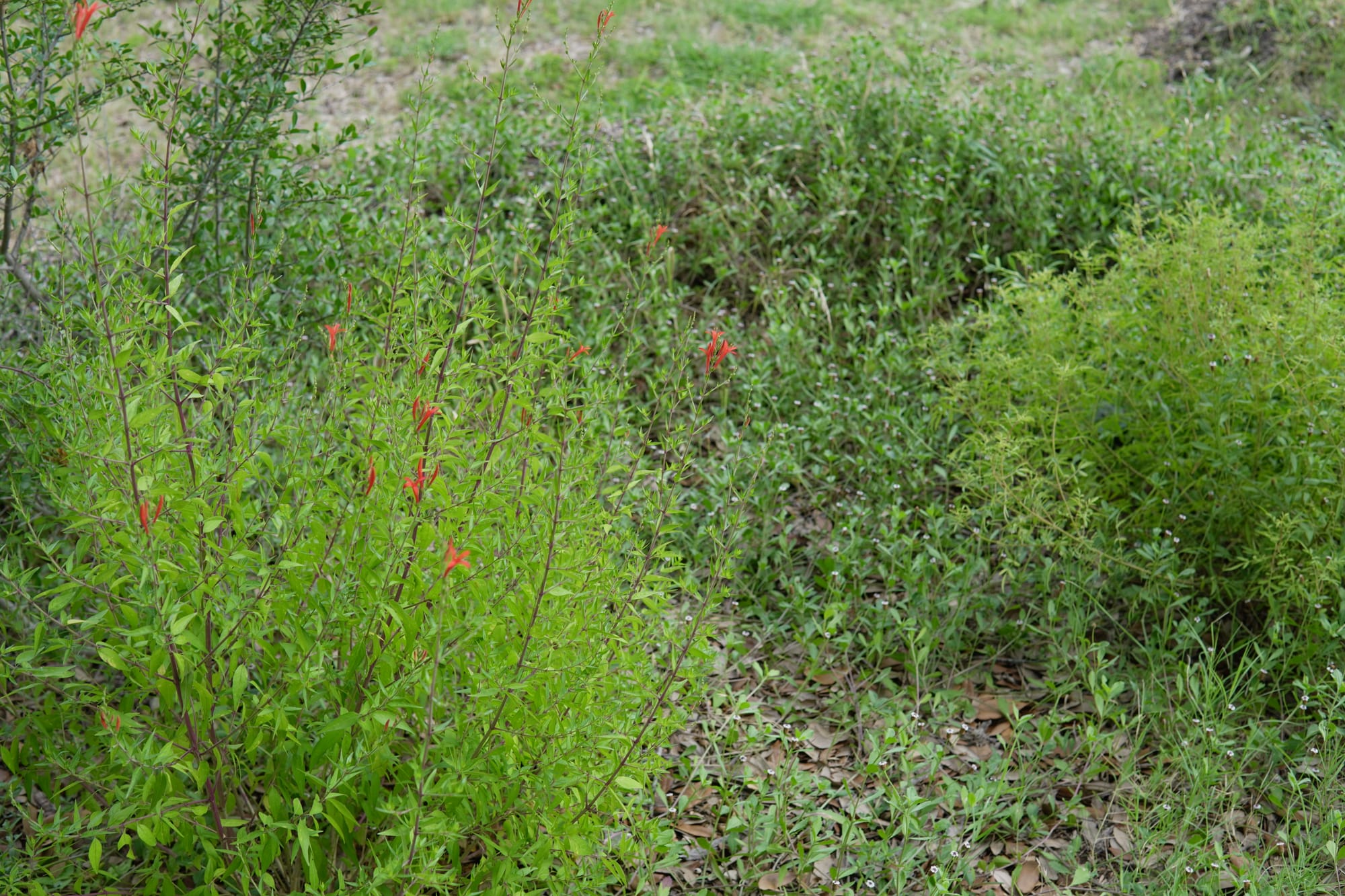
Seasons: What to Expect
Frogfruits are semi-evergreens, meaning they’ll stay green in areas with warmer winters. However, here’s what you can expect throughout the seasons.
- Spring: New growth galore! Before Frogfruit starts to bloom, you'll start to see it's reaching coverage. In the right conditions (that being an area that sees a little more water), your Frogfruit plant will start to spread. In late Spring, Frogfruit starts to bloom.
- Summer: During peak summer, it’s might be worth watering Frogfruit when things get especially dry. Frogfruit can withstand intense heat and light, and best so, with a little moisture. If your Frogfruit is planted in a drier position, you might consider the supplemental water–just keep an eye on it and make a discretionary call.
- Fall: The small white flowers on Frogfruit will appear all the way from mid-spring until fall (if there's enough moisture).
- Winter: After your Frogfruit has bloomed out and gone dormant in winter, you might consider cutting it back if it hasn't died back already.
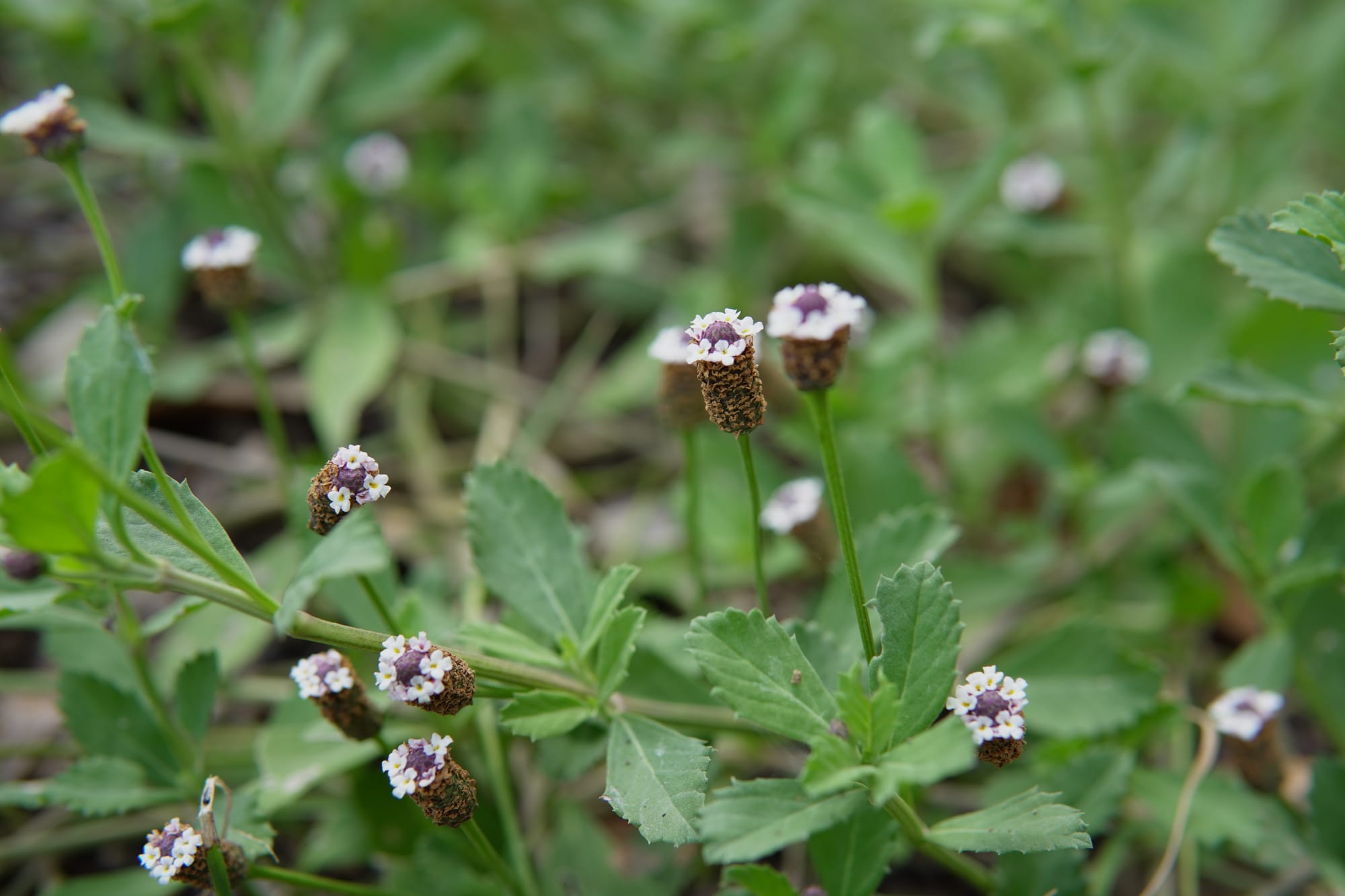
How to Propagate the Frogfruit Plant
Propagating Frogfruit is particularly easy as Frogfruit grows from runners. Simply divide and trim your Frogfruit plant where runners have already rooted. Each node will produce roots, so you have to clip a section and transplant it into the soil.
You can transplant that Frogfruit runner elsewhere or into a container–just make sure to keep it well watered upon transplanting, especially during a warmer, drier season.
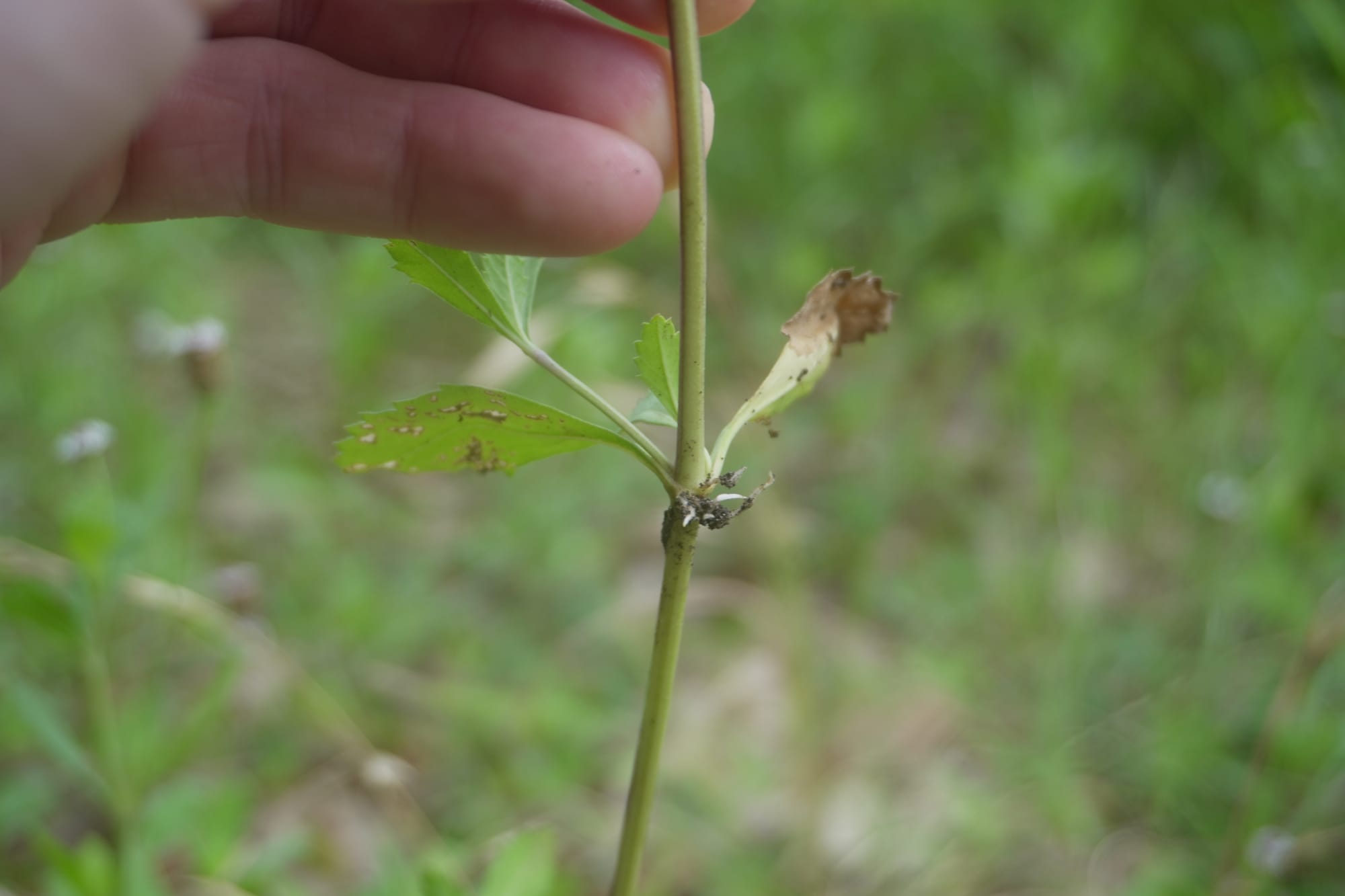
Sources
Along with my own experience working with the Texas Frogfruit in my landscape and learning from my observations out in Texas' natural places, here are all the books and resources that I consulted in producing this page:
📚 Books
- Native Texas Plants: Landscaping Region by Region by Sally and Andy Wasowski
- Wildflowers of the Texas Hill Country by Marshall Enquist
🌐 Websites
- (n.d.). Phyla nodiflora. Lady Bird Johnson Wildflower Center. https://www.wildflower.org/plants/result.php?id_plant=PHNO2
- (n.d). Frogfruit – Phyla nodiflora. Garden Style San Antonio https://www.gardenstylesanantonio.com/plants/frogfruit/

